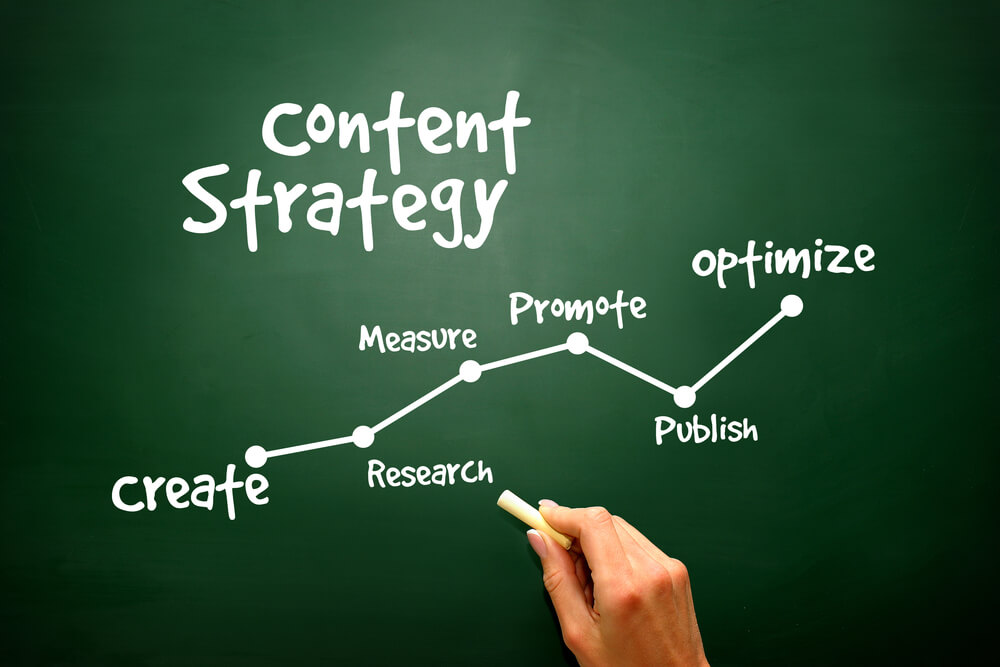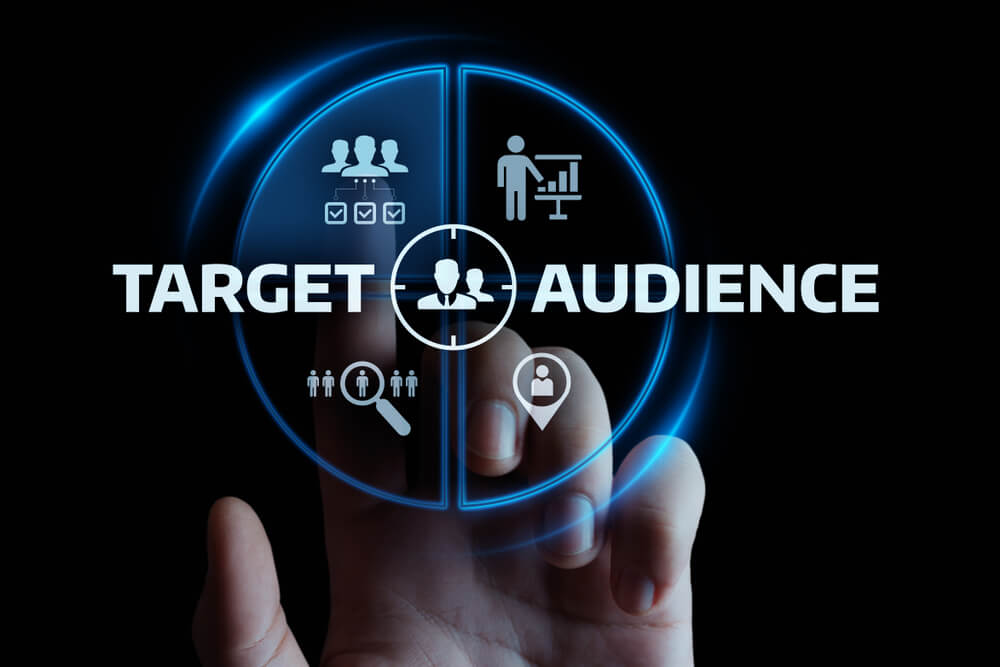
9 Steps To Develop a Robust Content Marketing Strategy Plan
Content marketing is now a fundamental aspect of the digital marketing landscape. A robust content strategy is essential for any business aiming to succeed online. Working with a content strategy agency can help navigate the complexities of developing a strategy. One that effectively engages your audience and drives interaction.
This guide explores the essential steps in developing a robust content marketing plan:
 Intimate knowledge of your target audience is critical to any content marketing strategy. This is especially true for small businesses that need a robust content strategy to engage their target market. Knowing who your audience is and what they need are essential to creating content that drives engagement.
Intimate knowledge of your target audience is critical to any content marketing strategy. This is especially true for small businesses that need a robust content strategy to engage their target market. Knowing who your audience is and what they need are essential to creating content that drives engagement.
 Developing a content roadmap is vital for your content marketing approach. It is a blueprint that outlines the details of your strategy. These include the types of content to produce, the timing of publication, and how each piece aligns with your goals and audience needs.
Developing a content roadmap is vital for your content marketing approach. It is a blueprint that outlines the details of your strategy. These include the types of content to produce, the timing of publication, and how each piece aligns with your goals and audience needs.
Each format offers unique benefits and caters to different audience preferences. When selecting content formats, consider what best aligns with your audience’s interests, your marketing goals, and your team’s content creation capabilities. A diverse mix of formats keeps your content strategy dynamic and appealing to a broad audience.
 Once the content is created and optimized, you must start distribution and promotion. This is crucial to maximizing the reach of your content and helping it achieve its intended impact.
Once the content is created and optimized, you must start distribution and promotion. This is crucial to maximizing the reach of your content and helping it achieve its intended impact.
Tracking the above metrics and using them to make informed decisions is best done through analytics tools and platforms. Do not mistake performance analysis for a one-and-done task. You have to regularly conduct it to adapt your strategy to changing consumer needs and market trends.
- Setting clear goals.
- Understanding your audience.
- Conducting content audits.
- Developing a content roadmap.
- Choosing the right formats.
- SEO optimization.
- Effective distribution and promotion.
- Analyzing performance.
- Scaling your strategy.
We’re the top B2B Content Marketing Agency in America. Watch the video below to learn why.
Define Your Content Marketing Goals
Crafting a successful content marketing strategy starts with defining clear and measurable goals. SMART goals drive accountability and provide a clear direction for your content efforts. SMART stands for:- Specific. Your goals should be clear and specific. Instead of a vague goal such as “increase website traffic,” aim for something more precise. For instance, the goal “increase website traffic by 20% in the next six months” leaves no room for ambiguity.
- Measurable. Make sure your goals are quantifiable. This makes it easier to track progress and know when you have achieved your goal.
- Achievable. While it is good to be ambitious, your goals must be realistic and attainable within your resources and time frame.
- Relevant. Your content marketing goals should align with your overall business objectives. It must also address core challenges and opportunities.
- Time-bound. Setting a deadline creates a sense of urgency and helps prioritize tasks and resources.
Understand Your Target Audience
 Intimate knowledge of your target audience is critical to any content marketing strategy. This is especially true for small businesses that need a robust content strategy to engage their target market. Knowing who your audience is and what they need are essential to creating content that drives engagement.
Intimate knowledge of your target audience is critical to any content marketing strategy. This is especially true for small businesses that need a robust content strategy to engage their target market. Knowing who your audience is and what they need are essential to creating content that drives engagement.
- Developing buyer personas. Start by creating detailed buyer personas. Based on market research and real facts about your existing consumers, these are fictional depictions of your ideal customers. Consider factors such as demographics, behavior patterns, motivations, and goals.
- Creating audience segmentation. Divide your audience into segments based on age, location, or interests. This helps create content that addresses each group’s specific needs and preferences.
- Gathering audience insights. Use surveys, social media listening, and website analytics to gather insights about your audience. Understand what content they consume, their challenges, and what influences their buying decisions.
- Aligning content with audience needs. Use the insights gathered to address your audience’s pain points and interests. This ensures that your content is relevant, valuable, and engaging to your target market.
Conduct a Content Audit
Conducting a content audit is crucial in devising a thorough content marketing strategy. This requires assessing all current content to identify its effectiveness, shortcomings, and gaps. Undertaking this evaluation is informative for your upcoming content planning. It also aids in aligning your strategy with both your objectives and the needs of your audience.- Inventory your content. List all your content pieces, including blog posts, videos, infographics, and social media posts. Cataloging these assets gives you a complete picture of what you have.
- Assess quality and relevance. Evaluate each piece of content for its quality, relevance, and performance. Does it align with your SMART goals? Is it tailored to your target audience? Assessing relevance and performance helps you identify the strengths and weaknesses in your existing content.
- Identify gaps. Look for topics or areas that your current content does not cover but are important to your audience. Identifying these gaps is crucial for planning future content that meets the needs of your target market.
- Plan for updates or removal. Decide whether you can update, repurpose, or remove underperforming content. Updating existing content is more cost-effective than creating new content from scratch.
Develop a Content Roadmap
 Developing a content roadmap is vital for your content marketing approach. It is a blueprint that outlines the details of your strategy. These include the types of content to produce, the timing of publication, and how each piece aligns with your goals and audience needs.
Developing a content roadmap is vital for your content marketing approach. It is a blueprint that outlines the details of your strategy. These include the types of content to produce, the timing of publication, and how each piece aligns with your goals and audience needs.
- Business goals alignment. Make sure that the content roadmap supports your overall business objectives. If your goal is brand awareness, plan content that showcases your expertise and values. For lead generation, focus on content that guides prospects through the buying process.
- Audience needs and interests. Your roadmap should reflect the interests and pain points of your target audience. This should be identified in your audience research. Tailor topics and formats to effectively address these aspects.
- Topics and types of content. Decide on the types of content you must produce, such as blog posts, videos, or infographics. Then, map out specific topics for each type of content based on your audience insights and content audit findings.
- Publishing schedule. Establish a realistic and consistent publishing schedule. Consistency is key in content marketing because it helps build audience trust and improves SEO.
- Resource allocation. Consider the resources available, including budget and personnel. This helps determine the volume of content you can produce and the channels you can effectively manage.
- Flexibility for adaptation. While it is important to have a structured plan, be prepared to adapt your roadmap based on performance data and changing market trends.
Choose the Right Content Formats
Selecting the right content formats is vital to the success of your content marketing strategy. Each format has its strengths and caters to different audience preferences. Hence, you have to choose formats that best resonate with your target market and support your goals.| Content Format | Strengths |
|---|---|
| Blogs | Ideal for SEO, versatile for different topics, excellent for thought leadership and in-depth exploration. |
| Videos | Highly engaging, good for demonstrations or testimonials, and easily shareable across platforms. |
| Infographics | Great for visual representation of data or complex information, easily digestible and shareable. |
| Podcasts | Increasing in popularity, is ideal for in-depth discussions, and appeals to audio content consumers. |
| Social media posts | Essential for real-time engagement and brand awareness and drives traffic to other content. |
| Webinars/live sessions | Facilitates real-time interaction and can be repurposed into other content types, such as videos. |
Optimize Content for SEO
An effective content strategy involves creating content that follows SEO best practices. A content strategy agency with expertise in SEO can ensure that your content is top-notch. They help you deliver material that resonates with your audience while ranking well in search engine results.- Keyword research. Conduct thorough keyword research to identify terms and phrases your target audience is searching for. Focus on keywords relevant to your services and audience interests.
- On-page optimization. Implement these keywords strategically in your content. Include them in titles, headings, meta descriptions, and the body text. Remember to maintain natural language to ensure readability.
- Quality content. Search engines favor high-quality, informative, and original content. Aim to create content that provides value to your audience. It must answer their questions and establish your expertise in the field.
- Link building. Develop a strategy to earn backlinks from reputable sites. This not only boosts your SEO but also enhances your credibility and authority.
- Regular updates. Search engines favor websites with fresh content. Regularly update your site with new blog posts, articles, videos, or infographics.
Distribute and Promote Content
 Once the content is created and optimized, you must start distribution and promotion. This is crucial to maximizing the reach of your content and helping it achieve its intended impact.
Once the content is created and optimized, you must start distribution and promotion. This is crucial to maximizing the reach of your content and helping it achieve its intended impact.
- Multichannel distribution. Use a variety of channels for content distribution. This includes your website, social media platforms, email newsletters, and other relevant online spaces where your audience spends time. A diverse distribution strategy increases your content’s reach.
- Social media sharing. Share your content on social media to engage with your audience. Tailor your approach for each platform to suit its unique style and audience.
- Email marketing. Use email campaigns to distribute content directly to your audience. Segment your email list to make sure that the content is relevant to each group of recipients.
- Content partnerships. Collaborate with influencers, industry experts, or other businesses to share your content. This introduces your content to new, relevant audiences.
- Paid promotions. Consider using paid advertising to boost the reach of your top-performing content. Platforms, such as Google Ads, and social media advertising can target specific audience segments.
Measure and Analyze Content Performance
What you learn from tracking the performance of your content is critical to refining your strategy. Measuring key metrics allows you to identify what works well and what needs improvement.| Metrics | Importance |
|---|---|
| Engagement metrics (page views, likes, shares) | Indicate how audiences interact with your content and its overall appeal. |
| Conversion metrics (click-through rates, conversion rates) | Measure the effectiveness of content in achieving desired actions, such as lead generation. |
| SEO performance (rankings, organic traffic) | Reflects how well your content performs in search engines. |
| Audience growth (social media followers, email subscribers) | Shows how your content impacts your brand’s reach and audience expansion. |
| Content ROI | Compares the costs of creating and distributing content against the revenue or value it generates. |
Scale Your Content Strategy
As your business and audience grow, evolving and scaling your content strategy becomes necessary. This process ensures that your content continues to engage your audience and align with your evolving business goals.- Expand content production. To keep up with your growing audience, increase the volume and variety of your content. Explore new topics and formats that resonate with your expanding audience base.
- Embrace automation and tools. Implement content automation tools for efficient scheduling and management. These tools are vital for handling the increased content volume without compromising quality. ChatGPT and Jasper AI are among the most prominent tools today.
- Incorporate audience feedback. Regularly collect and analyze your audience’s feedback. Use these insights to fine-tune your content, ensuring that it remains relevant and appealing to your audience.
- Stay updated with trends. Keep your strategy fresh and effective by staying abreast of the latest trends in content marketing and your industry.
- Enhance your team’s skills. As you scale, the need for a skilled team becomes more critical. Invest in training or partner with a content strategy agency for expert guidance and support.
Summing Up
Crafting a robust content marketing strategy involves several key steps. You have to set measurable goals, understand your audience, audit your current content, develop a roadmap, choose effective formats, optimize for SEO, and regularly assess your strategy’s performance. For expert assistance, consider working with Digital Authority Partners (DAP). Our specialized skills can help you effectively navigate these steps. We can help ensure that your content marketing efforts resonate with your audience and drive your business’s success. Contact us today to learn more.Want To Meet Our Expert Team?
Book a meeting directly here



